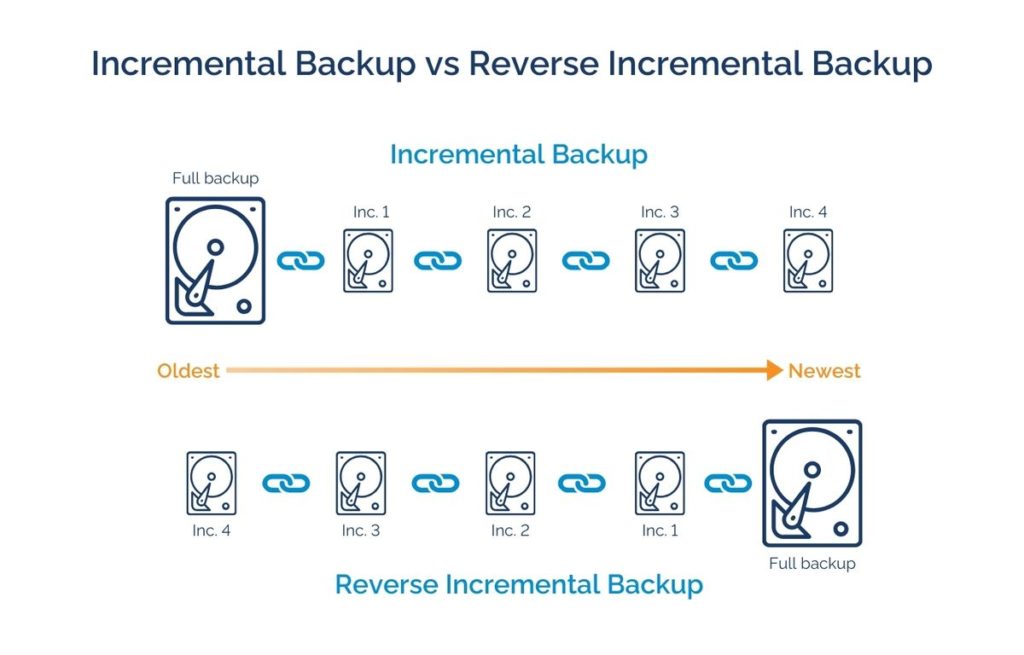When it comes to backup strategies, there are several options you could adopt to enhance your cyber-resilience. This article will help you understand the reverse incremental backup strategy.
What is reverse incremental backup?
Reverse incremental backup is a type of backup strategy that differs from the more traditional incremental backup approach. In a regular incremental backup, only the data that has changed since the last backup is copied. The result is that the oldest backup is saved in full backup form, and newer backups are saved as increments that depend on older backups in the ‘chain.’
In a reverse incremental backup, the same process of determining what has changed since the last backup is applied. However, when it comes to saving the backup, the most recent version of the data is saved in full backup form, while older backups are saved as ‘reverse increments’ that depend on the newer backups in the chain.

What is the advantage of the reverse incremental backup strategy?
The challenge with the incremental backup strategy is that the full backup is the oldest backup in the chain, and the most recent backup may depend on a long chain of incremental backups. If any of the backups in the chain are corrupted, then recovery from the more recent backups would fail.

In addition, recovering from the most recent incremental backup can be significantly slower than recovering from an older backup because more backup files need to be accessed during the recovery process. This makes incremental backup a suboptimal strategy because most people would want to recover from the most recent backup.
The reverse incremental backup strategy solves these problems by prioritizing the most recent backup. In particular, the most recent backup is always saved as a full backup that does not depend on any older backups for a successful recovery. This way, any corruption of older backup files would not affect the most recent version. Furthermore, recovering from the most recent backup is significantly faster in using this strategy.
The BackupAssist Classic Advanced Imaging Engine implements a fast and efficient reverse incremental backup strategy that helps minimize backup time, recovery time, and storage space requirements. Download BackupAssist Classic and start your 30-day free trial today.
Unsure which backup strategy is right for you? Contact our Client Success Team for expert advice!





